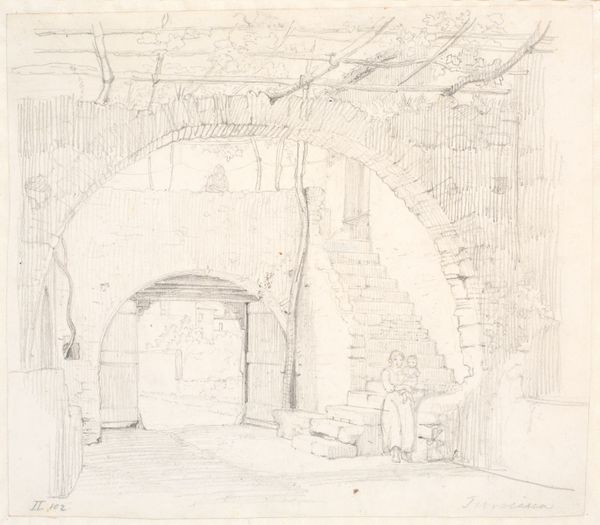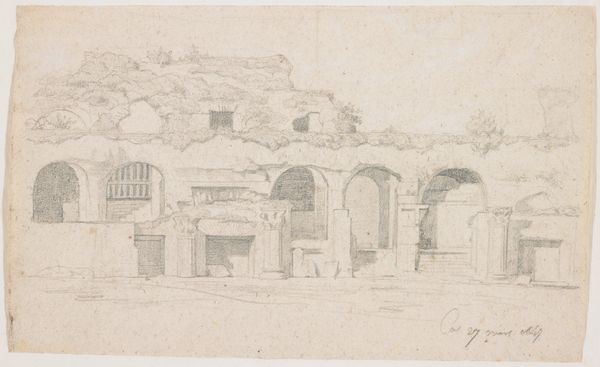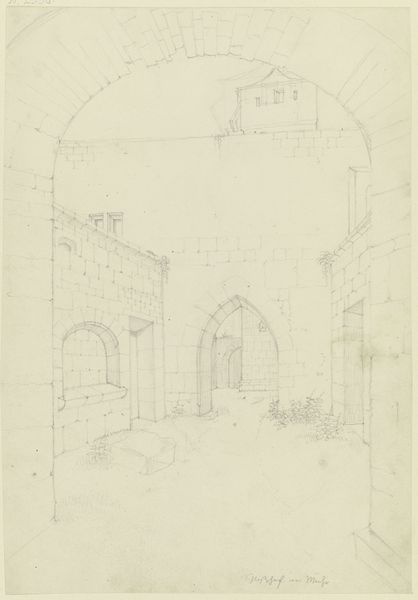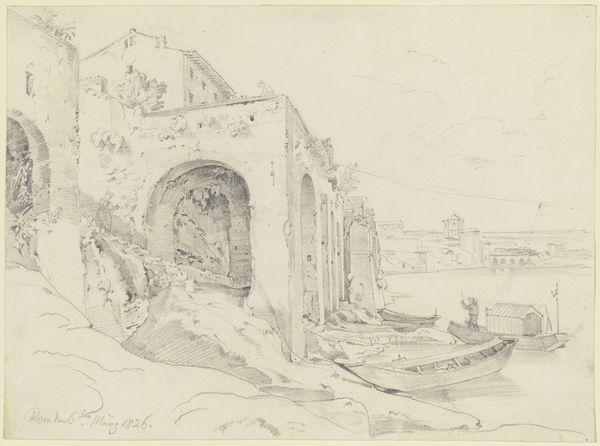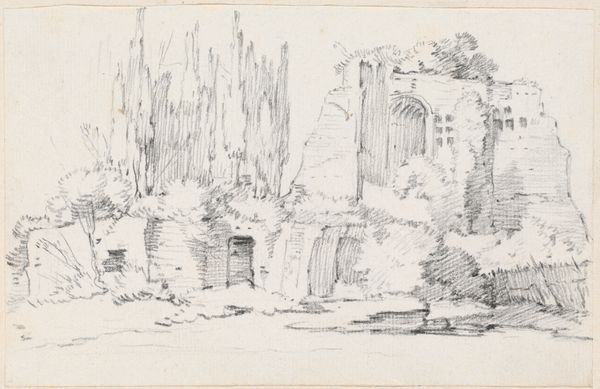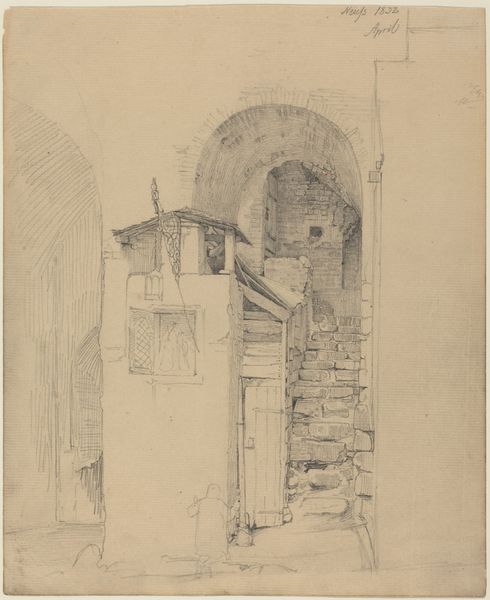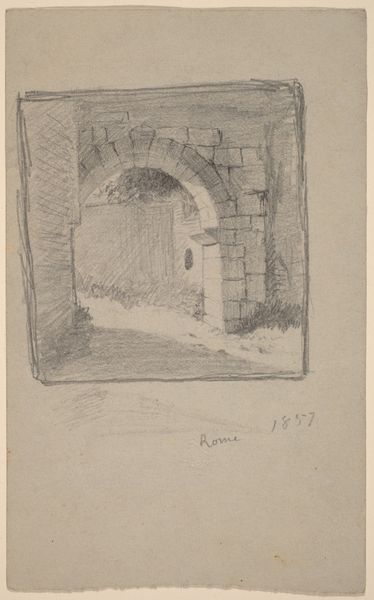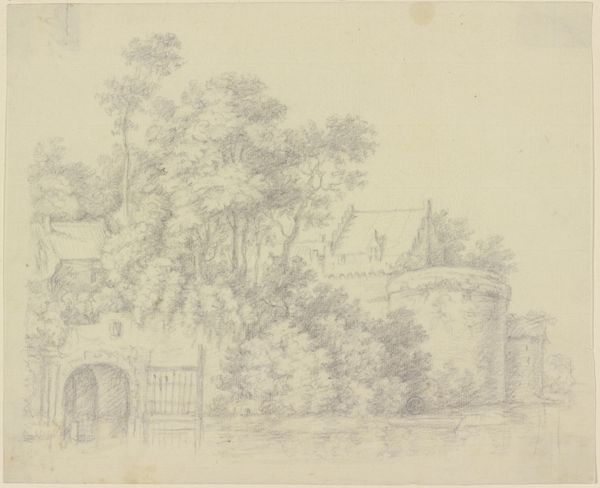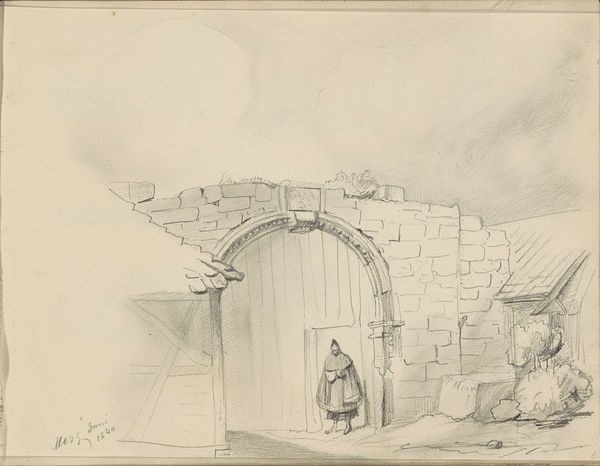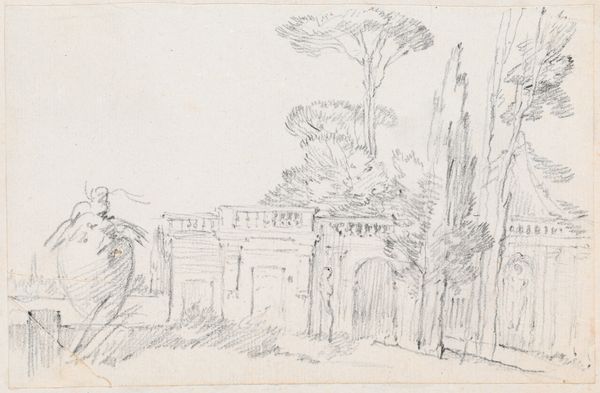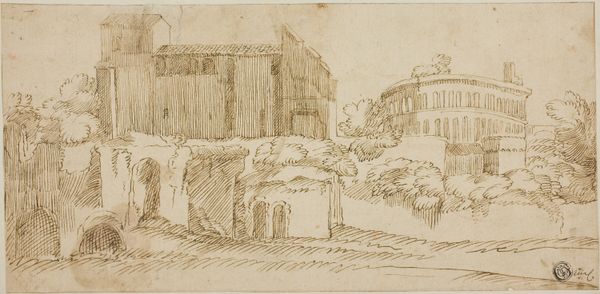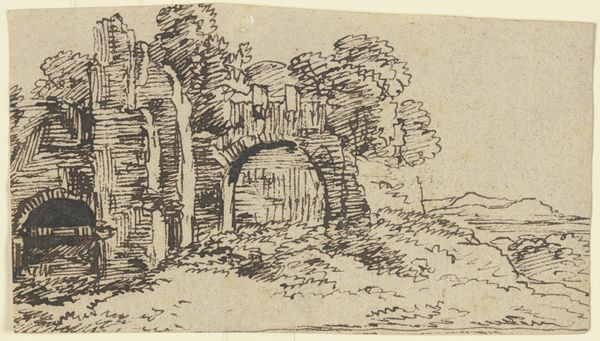
Dimensions: sheet: 11.4 x 18 cm (4 1/2 x 7 1/16 in.) page size: 42.5 x 27.7 cm (16 3/4 x 10 7/8 in.)
Copyright: National Gallery of Art: CC0 1.0
Joseph Marie Vien made this drawing, "Arch of Drusus near the Appian Way," with graphite on paper. The arch, a ruin even at the time, is more than just a historical landmark; it's a potent symbol, loaded with cultural meaning. Made in the late 18th century, this image reflects the growing interest in classical antiquity. Artists like Vien found inspiration in the grandeur of Roman architecture. The Appian Way, one of the earliest and strategically important Roman roads, connected Rome to its territories, facilitating trade, military movements and cultural exchange. This drawing speaks to the rise of Neoclassicism, an aesthetic movement that sought to revive the artistic ideals of ancient Greece and Rome. The École des Beaux-Arts, where Vien taught, played a key role in promoting this style, shaping the artistic tastes of the era. Understanding this drawing fully requires delving into historical archives, architectural studies, and the social history of 18th-century Europe, where the classical past was both a source of aesthetic inspiration and a tool for shaping national identity.
Comments
No comments
Be the first to comment and join the conversation on the ultimate creative platform.
